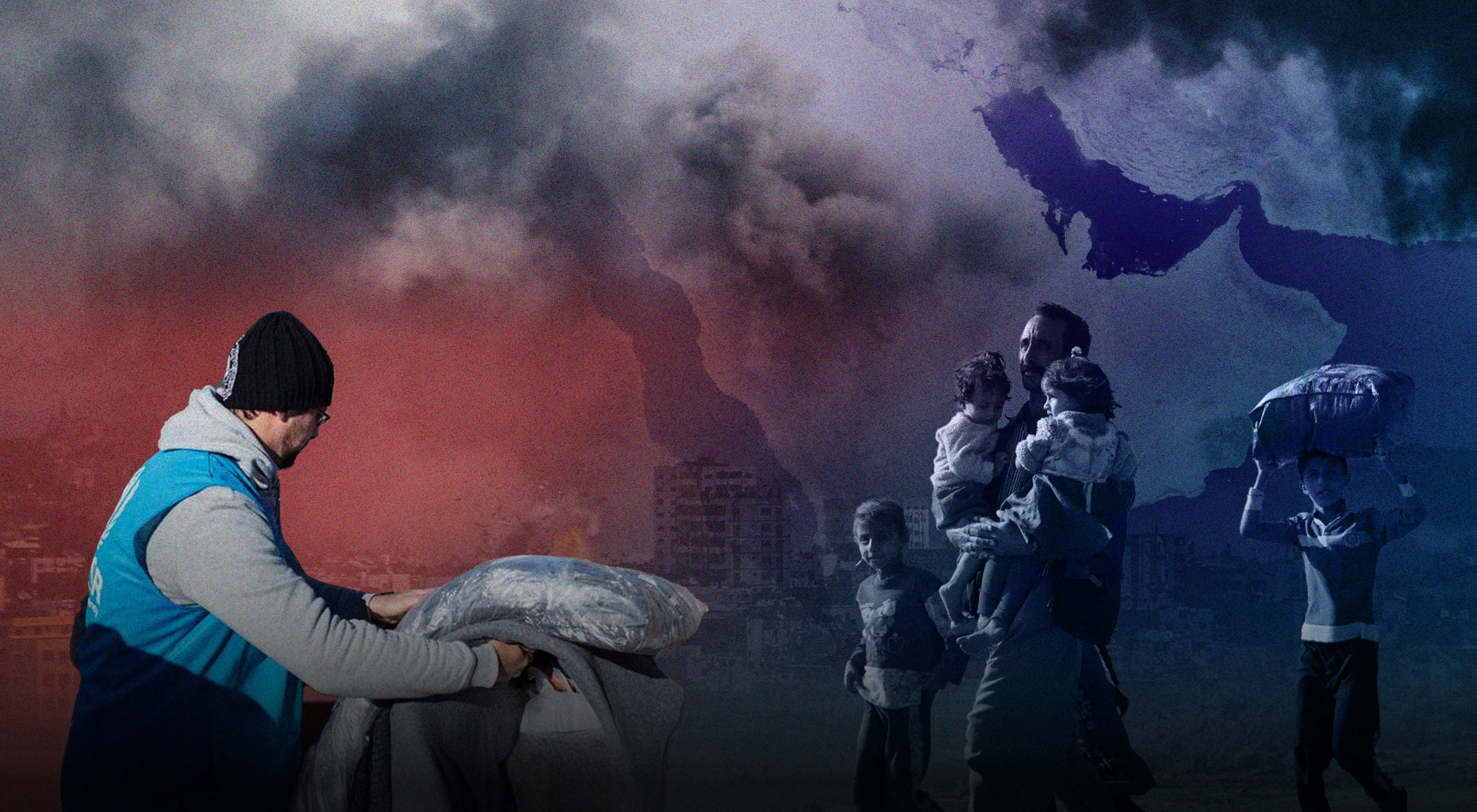Scholars, pundits, opinion-makers, and the general public agreed that the primary concern to address today in the contemporary Middle East is religious diversity and the need to protect religious minorities. As a result, the so-called religious minorities have gradually come to constitute a fundamental feature of state politics. They are usually depicted and discussed as coherent political assets in international affairs, as well as analytical categories through which a more immediate understanding of the Middle Eastern scenario is finally possible.
This analysis will argue that the constructed character of religious minorities and majorities has too often been disregarded in international politics. It will primarily employ historical examples from Syria, Lebanon, Iraq, and Chile, to analyse religion used as a comprehensive explanation for indicating civic privileges or deprivations, or for stressing amity or enmity that have been awarded to religious minorities.
In the effort to trace the emergence of the language surrounding “minorities”, historian Benjamin T. White in 2011 associated the history of minorities with the historical formation of nation-states in the Middle East. He unearthed how a language of minorities only emerged in the 1930s with French bureaucracy, which was still dominating the country at that time: the central state presence in people’s everydayness was intensifying. The use of the term “minority” increased, in particular, in the post-French mandate Syria (1940s). Once state, in the modern Middle East, began to more fully represent the people, all ‘’groupable’’ societal component collectively began to perceive themselves in terms of frustrated minorities or accomplished majorities. Arguably, this was in order to feel more included and entitled to services and benefits.
In the knowledge that has been produced around the Middle East, confessional labels are attributed to diverse popular wills. This, for instance, deceivingly led us to think that Saddam Hussein’s Iraq was actually in need of a Shiite regime, in that the national population is predominantly Shiite. And that Syria, from 2011 onwards, underwent an unprecedented political crisis because the ruling regime is from the Alawite minority, and, as such, it cannot rule undisturbed over a Sunni majority. Or, again, how many times have knowledge producers argued that the mainly Shi‘a-populated Bahrein needs a Shiite regime to stop local discontent and meet the reiterated requests for freedom once for all? Or also that the ruling power in Iran keeps the country stable because there is a Shiite coalition there ruling over a Shiite-majority population?
In our desire for historical understanding, we constantly feel like we owe consciousness to our past: the quick association of majority with domination and, likewise, minority with subordination, risks shadowing the shifting sites of power that underlie societal relations. The Syrian revolution offers a perfect case in point, in that it has prematurely been portrayed by several media as a ‘’civil war’’, as well as a confessionally biased demand for greater freedoms coming from the Syrian Sunni majority. The interpretation according to which the Sunni majority protesting could result in the oppression of the minority groups living within the state boundaries, would obscure the actual distribution of power within Syrian society. Such a biased interpretation of social facts is said to have resulted in poor international solidarity for the protesters in Syria with respect to the Egyptian or the Tunisian revolution.
Indeed, the alternately scant or deep empathy that the international community has developed towards particular political causes or military interventions in the Middle East is often dictated by the alleged need to protect the ‘’primordial’’ minorities populating the region. In this regard, the minority-majority dual is employed to describe religious as well as ethnic groups that can easily be homogenised. For instance, speaking of Kurds as a minority is highly misleading: in the effort to politicise the minority concept and explore the present life conditions, the Kurds and groups alike should simply be described as ‘’oppressed’’. Yet they constitute a heterogeneously oppressed or disempowered population of approximately 30 million people majorly distributed between Iran, Syria, Iraq, and Turkey. The nation-state boundary logic has forced them to be described in minority terms. Similarly, it is the invasive presence of the state in the Middle East – generally using divide-and-rule strategies – that has triggered a longing for secessionism and identity-defined independence in particular religious or ethnic groups.
A further example has been provided by the violence used by Da‘esh (ISIS) against the ethnic and religious groups who inhabit the Arab Jazira – the ancient Upper Mesopotamia extended between Syria and Iraq – which has led people to talk of the importance of protecting religious minorities, and therefore using religion as an easy explanatory instrument. In fact, the populations attacked by Da‘esh nowadays are Muslim as well. Like Christians, Muslims are killed on a daily basis. The killed ones, hence, are those who are simply refusing, in many forms, to live under the caliphate. Their quantification has long served political intentions and fears. And here lies the fallacy of ‘’religion’’ meant as an empty category that we can fill with any meaning, but still massively capable, however it is interpreted, to shape events and raise different collective sentiments.
In the examples provided above, identity politics trumps any other understanding of the Middle East’s changing scenario, by departing from the idea that ‘’minority identities’’ are objectifiable, and can be filled up with a fixed political content. In other words, religious and ethnic groups are discussed as if they owned an identity-shaped attachment to their territory. Therefore, neither Christians under Da‘esh nor the Kurds are seen as simply reacting to state-owned power, or to any entity where power is temporarily located.
History has clearly shed a revealing light on how the international community, and not only politicians, have increasingly used the expression – and consequently adopted the strategy of – ‘’protecting minorities’’. It is the colonial protection of minorities in the Middle East that turned socially diverse groups of religious believers into separate bodies. By doing so, they further exposed them to the risk of massacres or civic inferiority whenever prevailing political interests and material circumstances do not allow the traditional protectors to defend such “minorities”. Paradoxically, such outsider protectors tend to rush over to allegedly fight on behalf of domestic groups in the historical context in which the latter have actually grown.
Furthermore, the common myth on which the international and domestic understanding of the Middle East relies is that such unchangeable religious categories are permanently at odds with one another. If we look at the historical roots of what is depicted as a chronic regional rivalry, the protection of minority communities has always been leverage for western sway in the Middle Eastern region. Like the case of the French protecting the Christians in Syria and the Maronites in Mount Lebanon, especially during the fight against the British-supported Druzes in the 19th century.
The political use of the notions of minorities and majorities in the intellectual construction of the Middle East is therefore ideological work still encrusted with colonial nuances. And this is certainly not peculiar to the Middle Eastern scenario. In fact, some social groups, smaller in terms of numbers with respect to the ethnic or religious majority living within the same nation-state, have not developed their own sense of properly constituting a ‘’minority’’. For example, the Asian communities in Chile are mostly represented as migrant groups in the news and in the literature concerning them. By contrast, Bolivian and Peruvian migrants in Chile are spoken of as “minorities”, in that they migrated from countries against which Chile had fought a regional war in the 19th century. This further confirms the political use of the majority-minority dual.
Religious labels have also been used by governors, common people and scholars as a way to point to proximity or distance in terms of political purposes. The Christian Greek Orthodox, who, unlike other Christian groups, used to be more willing to accept a Syrian Arab nationhood over the 1930s, exemplify this phenomenon, as they had tellingly been called the ‘’cousins of Islam’’, being the Muslims the vast majority among Syrian nationalists. Thereby, the commonality of a political cause was leading the Muslims to find linguistic expressions of religious proximity to describe their Christian Orthodox fellows.
The political is obviously only one dimension of the multiple character of this ancient all-encompassing concept of religion, which is largely adopted in social and political sciences to advance analyses. We should rather reclaim ‘’religion’’ as a constructed human way of naming an immense range of practices, beliefs, theological tenets as well as contradictory human behaviours related to this realm of meanings.
Certainly, the abused description of ‘’Middle Eastern exceptionalism’’ does not lie in an irremediable and almost innate division of the region into unchangeable and homogenous religious or ethnic minorities, purportedly conveyers of self-standing identity politics. But rather lies in the external and domestic incapacities to cultivate better strategies to know the Middle East and speak of it.
This is a revised version of a piece that appeared for Humanity Online “The Abused Politics of “Minorities” and “Majorities”: Quantifiable Entities or Shifting Sites of Power?” 4 May 2015 http://humanityjournal.org/blog/the-abused-politics-of-minorities-and-majorities-quantifiable-entities-or-shifting-sites-of-power/ .








